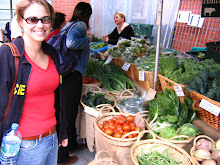 So, I’m up at White Earth, settling in and finding myself doing a lot of grant-writing. Putting a lot of resources into grant-seeking seems to be the fate of most non-profits, I’m afraid. It makes sense from a financial point of view, especially for farms and food-oriented enterprises. There isn’t a lot of money to be made on producing or distributing food. There are reasons for this—most of which I don’t agree with—such as cheap food policies that make food plentiful and mostly bad for us, and which drive farmers to bankruptcy when the costs of production are greater than the market price. This also tends to keep would-be farmers from even trying out the project of agriculture at all. These structural constraints leave a few farmers with big operations producing a few crops that are engineered to be big yielders that need to be babied with a lot of chemical fertilizers and pesticides. These crops are then turned into value-added products such as high-fructose corn syrup (soon to be relabeled “corn sugar”). Yeah that would be the mostly bad for us (and them) part.
So, I’m up at White Earth, settling in and finding myself doing a lot of grant-writing. Putting a lot of resources into grant-seeking seems to be the fate of most non-profits, I’m afraid. It makes sense from a financial point of view, especially for farms and food-oriented enterprises. There isn’t a lot of money to be made on producing or distributing food. There are reasons for this—most of which I don’t agree with—such as cheap food policies that make food plentiful and mostly bad for us, and which drive farmers to bankruptcy when the costs of production are greater than the market price. This also tends to keep would-be farmers from even trying out the project of agriculture at all. These structural constraints leave a few farmers with big operations producing a few crops that are engineered to be big yielders that need to be babied with a lot of chemical fertilizers and pesticides. These crops are then turned into value-added products such as high-fructose corn syrup (soon to be relabeled “corn sugar”). Yeah that would be the mostly bad for us (and them) part.In the meantime, thousands of varieties of food crops which have been locally developed over centuries to provide good food for small communities of growers and eaters have been lost in the push towards monocultures of high-yielding hybrids and GMOs.
Seneca Pink Lady is one such variety.
So, I was minding my own business the other day, toiling in the money mine, almost ready to call it a day and think about supper, when Winona came home with five garbage bags full of corn. Clear the table, she said, this corn needs to be husked and braided tonight. Facing 300 ears of corn at 8 pm, suddenly made me very interested in budgets, narratives and justifications. But there was no way out of this one, and once I fully understood the project, I was very turned on to the idea.

Winona had been given a few ears of a variety of pink and red colored corn (as opposed to white, yellow and blue) that is grown for cornmeal by a First Nations tribe in New York. She made an executive decision (as executive directors of non-profits get to do) to grow it out as the White Earth Land Recovery Project’s special corn variety. It’s not hard to understand the value of doing this. It’s not only visually beautiful to behold, it’s also like looking at a living museum. And, these three hundred or so ears of corn are some of the only remaining seeds of this corn ON THE PLANET. I was a little awestruck. And made haste to clear the table.


That evening we sat around and chatted late into the night while we “undressed” (as Winona put it) the ladies. The traditional way of drying the corn kernels for use as food, and for preserving the seeds for the next year’s crop is to braid the corn husks so that it could be hung up. The husks needed to be peeled back, with the silks and any underdeveloped tops removed. As I delicately peeled back the husks to reveal the speckled magenta kernels, I felt like I was handling jewels. The corn was fat, smooth and glistened with the luster of health and life.
The corn had been grown out by a local farmer (in a lot of horseshit, according to Winona) and it was remarkably robust and completely free of worms and mold. That would be because it was adapted over centuries to growing in northern climates. Duh. All it needs is some old fashioned fertilizer. No pesticides and no genetic engineering to turn a few ears of corn into tens of thousands of seeds. It is not a minor miracle, and was impressed all over again with the ingenuity intelligence and eye for beauty of our ancestors who took a wild plant called teosinte and turned it into this amazing food. More on this here: http://www.nsf.gov/news/news_images.jsp?cntn_id=104207&org=BIO

The next morning I, and another volunteer, Erica from the Shinnecock tribe on Long Island, braided up the pink ladies and hung them up to dry in a room in the upstairs of Winona’s cabin. It felt like a sacred ritual, and in many ways it was. It was a tribute to the wisdom of the past and a pledge to work toward the preservation of life for the future. If that isn’t a ritual worth doing, I don’t know what is.

Very informative and written nicely.
ReplyDeleteOh my gosh! I would love to grow this variety up here. Would you consider trading from a batch of yours?
ReplyDeletewould you sell these seeds to the public along with different colorful varieties
ReplyDelete